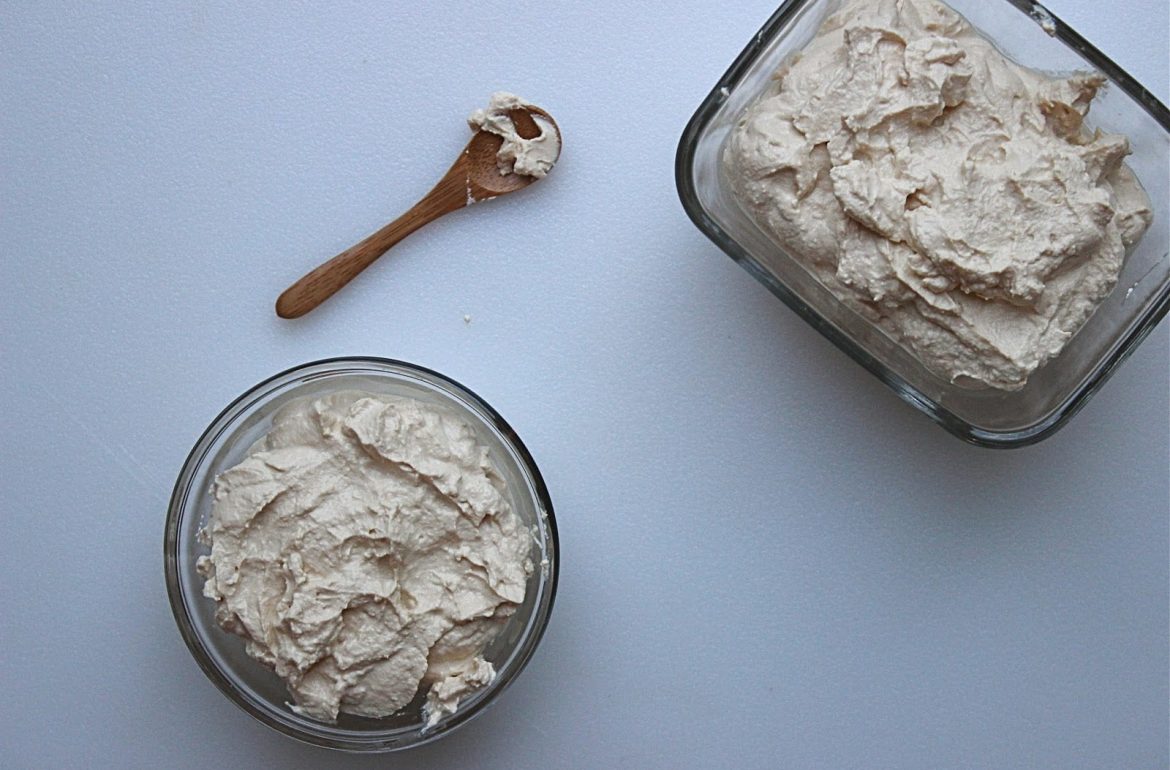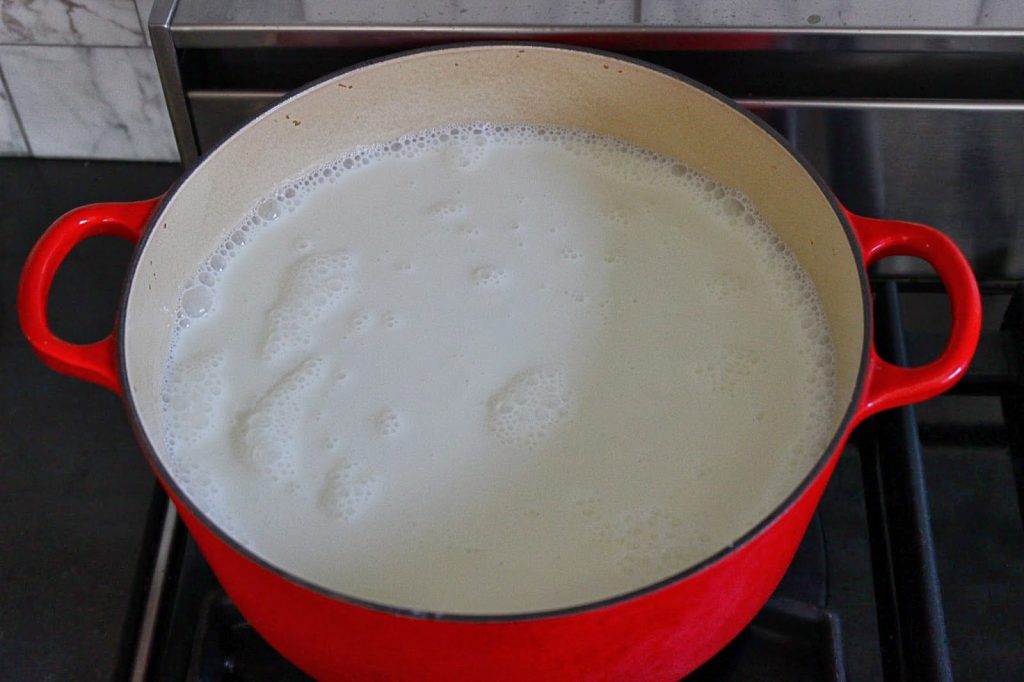I find the concept of an “acquired taste” a very interesting one. Exactly when and how does one “acquire taste”?
Growing up in Vancouver, whenever kashk was supposed to be used in a dish my mom would replace it with either yogurt or sour cream – if we were feeding our Canadian or American friends. Kharejeeha- foreigners (said Canadians or Americans being the “foreigners” in this case) don’t like the taste of kashk, it’s an acquired taste is what we would always hear. So substitutions were made. But as a child I always felt kharejeeha were missing out. What was not to like about this tangy – flavorful – creamy – dip-like – yogurt-like – ingredient.
Thanks to the advent of technology and globalization the world has become a smaller place – and simultaneously our palates have expanded and “acquired” a liking and curiosity for foods from all different parts of the globe. Kimchi, miso, harissa, za’atar – foods and spices that were once deemed ethnic or exotic are now as common place as mayo and ketchup – well, almost. So it is in this spirit of world food and expanded curious palates that I present you with Kashk. I think kharejeeha are more than ready and willing to give it try and fall in love with it.
Of course I am not the first to praise the deliciousness that is kashk. As I mentioned in this post Mr. Ottolenghi has been talking up kashk for some time now. Think of kashk as an added creamy-like ingredient that really adds a depth of flavor to soups, aash (thick Persian soups-recipe coming next)- dips – stews – eggs…Use it as you might use creme fraiche in a savory dish. Kashk plays the same role as anchovies, tomato paste, and parmesan rind do to add depth of flavor to any given food. To give it that extra kick of deliciousness.
In a nutshell, kashk is fermented yogurt. I recently tried my hand at making homemade kashk. Yogurt is mixed with equal parts water and simmered for a couple of hours until all the liquid has evaporated and you are left with a loose pulp.

The dry pulp is then placed in a blender with some fresh water and salt. Finally blend until you have a creamy consistency.

The pulp is then placed in a cheesecloth (I found using my nut milk bag worked great) and you squeeze as hard as you can to get rid of every last bit of the yellowish liquid (discard the liquid). You want the pulp to be as dry as possible.
I like to divide the kashk into small containers and either use right away or freeze until needed. Although it takes a couple of hours to simmer the yogurt, the active prep time in making kashk is minimal. Of course, you can also purchase kashk from Persian grocery stores. If you purchase the dried kind you will have to reconstitute it with water. I recommend using the refrigerated liquid kind. You may have to try a few different brands to find the best tasting one (of course nothing is like homemade kashk). You can also purchase kashk here , here, and here.
And please do let me know if you “acquire” a taste for kashk.
HOMEMADE KASHK
Update: 01/04/15 Hi everyone! I realized that I did not previously specify the type of salt I use when making kashk. Which can make a big difference in the taste. I use fine grain sea salt. I had written to use 1 tablespoon salt. However, I now think you should start with 1/2 tablespoon sea salt (a little more if you are using kosher salt) and increase to taste as needed. If by any chance you find your kashk is too salty just decrease the amount of salt in the dish you will be using the kashk in. The amount of salt in the recipe below now reflects this change. Enjoy!
Makes about 2 cups kashk
Ingredients:
2 32oz containers of full fat sour (European style) plain yogurt (I use this kind)
water
sea salt
1- Place the yogurt from both containers in a large pot over medium heat. Fill the empty containers up with water and add to the yogurt. Stir and bring to a gentle boil. Turn down the heat slightly and let the mixture simmer for about 2 1/2 hours or until all the water evaporates and you are left with a pulp like ingredient. Stir once in a while to make sure nothing is sticking to the bottom of your pot or burning. Through this process the yogurt will separate and break down. This is normal. The color of the yogurt will also turn from creamy white to a pale beige. There will also be a distinct tart smell.
2- Place the contents of the pot in a nut milk bag or 2 layers of cheese cloth and set over a large bowl. Squeeze out as much liquid as you possibly can. You want the pulp to be as dry as possible. Discard the liquid.
3- Place the pulp in a blender and add 1 cup filtered water and 1/2 tablespoon salt. Blend until you have a creamy consistency. Add more water if necessary to thin it out. Taste and add more salt as needed. I usually end up using a little under 1 tablespoon salt total.
Divide kashk and place in small containers. Ice cube tray works great too. Will keep in the fridge for up to 3 days and the freezer for up to 3 months.





Comments (13)
Thank you for this recipe. I wanted to make it before but I did not know it is that easy!
I'm so glad Mirka. It really is easy, just takes some time. Most of it inactive time though. Let me know how your kasha turns out!
Funny to find this recipe now. I got Plenty More as a Christmas gift and was wondering about kashk. Now I can actually make this and not replace it with something else. thank you.
Adina, so glad you are going to give homemade kashk a try. Enjoy!
As a foreigner, I find that the authentic kashk reconstituted from the dried balls (mine actually came straight from Iran), is a bit musty. Especially so compared to fresh yogurt. Is it the mustiness peculiar / normal in kashk?
Anonymous, I think the mustiness is actually normal when using dried kashk balls. Just make sure you keep the dried balls in the freezer as they will keep longer.
Hi Anon., You can use a cheese cloth or nut milk bag as I have done. But yes, that whole step is absolutely necessary. You need to squeeze all the liquid out until you are left with a dry pulp. You should be able to find cheese cloth at any grocery or kitchen appliance store. Good luck!
I need to make this tonight, is the cheesebag or that whole step nessasary? Is there an alternative ?
I never had to acquire a taste for kashk. The first time I had Kashk bademjan (sp?) I swooned! Of course, I thought it was made with yogurt.
Then my friend's mother-in-law wrote out the recipe for ash e reshte (again, sp?) and told me how to choose the right kashk, since there's no English on the labels. When I opened the jar, I was a little leery, but oh my! What it does for that soup is heavenly!
My Iranian girlfriend made me Kaleh Joosh last night. I acquired the taste in a matter of minutes! I just finished the leftovers, delicious! I will try to make the dish with homemade kashk. thanks!
My Iranian girlfriend made me Kaleh Joosh last night. I acquired the taste in a matter of minutes! I just finished the leftovers, delicious! I will try to make the dish with homemade kashk. thanks!
I want to try to make this and your recipe seems to be the simplest to follow for someone trying for the first time. However, I’m a little confused because in the pre-recipe text with the pictures it appears that the mixture goes into the blender first with water and salt and is then strained through cheesecloth, but in the recipe itself it says it is strained through cheesecloth first and then put in the blender with water and salt. What is the correct order of those steps?
Hi David,
Thanks for your comment. The mixture that has been simmering on the stove is first strained through a cheese cloth and then the pulp is placed in the blender with fresh water and salt (as needed). It’s exactly as written in the recipe. I just didn’t add the straining photo. I hope this is helpful. Please let me know if you have any other questions. Enjoy!